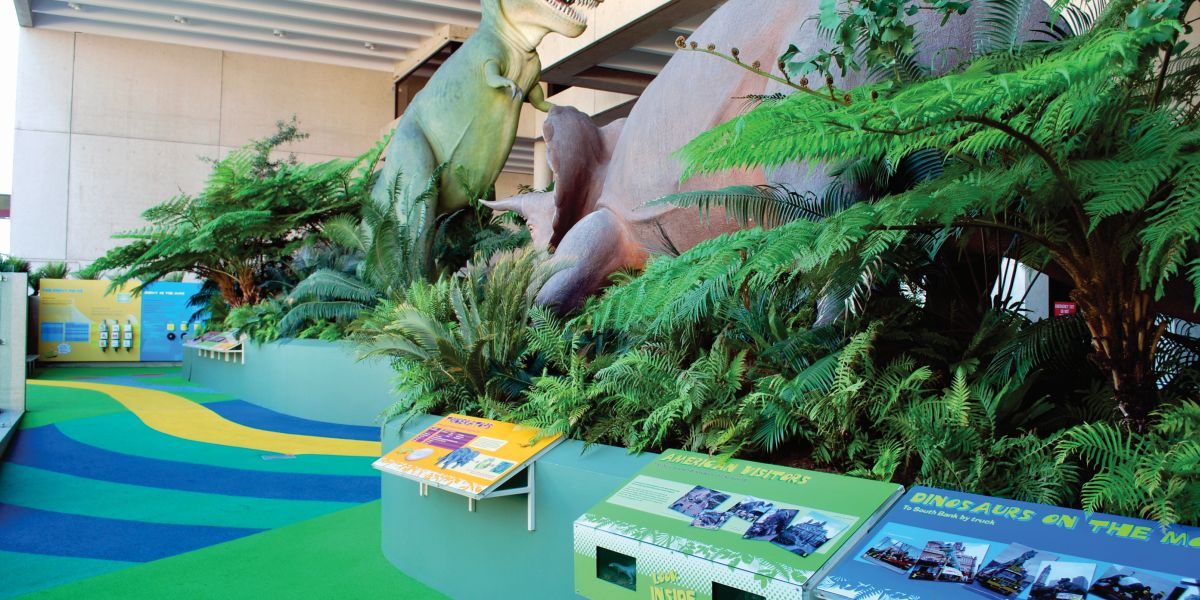Dinosaurs in Energex Playasaurus Place – Queensland Museum
Discovering how energy works from prehistoric times to the present.
Client: Queensland Museum
Category: Museums
Date: 2010
The dinosaur garden, now known as Energex Playasaurus Place, is an iconic part of the Queensland Museum designed to engage a young audience. It was refurbished and renamed after the Brisbane floods in 2010. Visitors can learn about energy and its different forms, from prehistoric times to the present.
The dinosaurs in the display were brought across from Gregory Terrace in the 1980’s and formed part of the ‘Dinosaur Garden’ exhibition (also fitted out by Brandi Projects). After the 2010 Brisbane Floods devastated the previous exhibition, the Queensland Museum secured sponsorship for refurbishment of the damaged site by Energex. The purpose of the new Project then became twofold, to refurbish the previous Dinosaur Garden, whilst bringing in energy-related stories which could tie in with both the sponsor, and the existing display. The exhibition tells the story of energy past, present and future. The huge replica dinosaurs are used along with interpretive panels to explain what dinosaurs ate to fuel their bodies, juxtaposed against our present energy use, and encouraging a commitment towards a sustainable future. Being at the entrance to both the Queensland Museum and the Science Centre, the space is a great introduction to the themes which await children further within.
Features at a Glance
- The overarching linking feature of the exhibit is cartoon dinosaur Rex, a fun character that pops up around the exhibition, prompting engagement and interaction and expanding educational elements around energy
- Dinosaur elements include life-sized dinosaurs, dinosaur eggs and hatchlings, dinosaur footprints, rocks and fossils. Children learn how science can uncover new information about history through interpretive graphic panels mounted onto dinosaur garden beds.
- Also featured, are some of the prehistoric plants and animals which helped to form coal, allowing a good transition into energy concepts.
- Children can watch dinosaur eggs hatching, comparing the size of dinosaur eggs to other animal eggs.
- Heavy duty bikes are pedalled in the ‘Ride the Energy Bikes’ interactive activity. Children can experience how their own energy output can power up appliances, and learn that different appliances need more or less energy to work.

